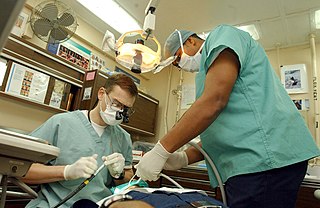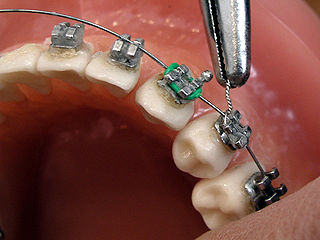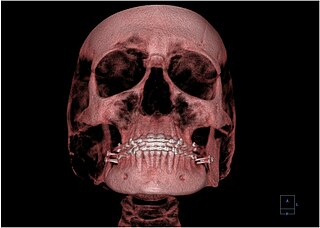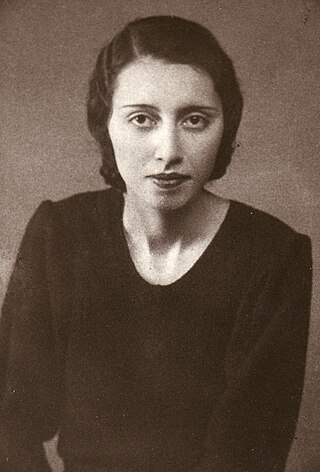Related Research Articles

A dentist, also known as a dental surgeon, is a health care professional who specializes in dentistry, the branch of medicine focused on the teeth, gums, and mouth. The dentist's supporting team aids in providing oral health services. The dental team includes dental assistants, dental hygienists, dental technicians, and sometimes dental therapists.

Orthodontics is a dentistry specialty that addresses the diagnosis, prevention, management, and correction of mal-positioned teeth and jaws, as well as misaligned bite patterns. It may also address the modification of facial growth, known as dentofacial orthopedics.
The voiced alveolar nasal is a type of consonantal sound used in numerous spoken languages. The symbol in the International Phonetic Alphabet that represents dental, alveolar, and postalveolar nasals is ⟨n⟩, and the equivalent X-SAMPA symbol is n.

Endodontics is the dental specialty concerned with the study and treatment of the dental pulp.
Oral and maxillofacial surgery is a surgical specialty focusing on reconstructive surgery of the face, facial trauma surgery, the oral cavity (mouth), head and neck, and jaws, as well as facial cosmetic surgery/facial plastic surgery including cleft lip and cleft palate surgery.

A dental hygienist or oral hygienist is a licensed dental professional, registered with a dental association or regulatory body within their country of practice. Prior to completing clinical and written board examinations, registered dental hygienists must have either an associate's or bachelor's degree in dental hygiene from an accredited college or university. Once registered, hygienists are primary healthcare professionals who work independently of or alongside dentists and other dental professionals to provide full oral health care. They have the training and education that focus on and specialize in the prevention and treatment of many oral diseases.
A number of professional degrees in dentistry are offered by dental schools in various countries around the world.
The water fluoridation controversy arises from political, ethical, economic, and health considerations regarding the fluoridation of public water supplies.
An oral medicine or stomatology doctor/dentist has received additional specialized training and experience in the diagnosis and management of oral mucosal abnormalities including oral cancer, salivary gland disorders, temporomandibular disorders and facial pain, taste and smell disorders; and recognition of the oral manifestations of systemic and infectious diseases. It lies at the interface between medicine and dentistry. An oral medicine doctor is trained to diagnose and manage patients with disorders of the orofacial region.

Dental assistants are members of the dental team. They support a dental operator in providing more efficient dental treatment. Dental assistants are distinguished from other groups of dental auxiliaries by differing training, roles and patient scopes.

Dentistry throughout the world is practiced differently, and training in dentistry varies as well.
A dental therapist is a member of the dental team who provides preventive and restorative dental care for children and adults. The precise role varies and is dependent on the therapist's education and the various dental regulations and guidelines of each country.
The Melbourne Dental School is one of the graduate schools of the University of Melbourne. In addition to the 4-year graduate dental program the Doctor of Dental Surgery, the school offers specialty training programs combined with the Doctor of Clinical Dentistry degree, advanced training programs, and research degrees including M.Sc. and Ph.D. programs. According to the QS World Rankings, it is the highest ranking dental school in Australia and often ranks among the top 25 in the world.

Oral and maxillofacial radiology, also known as dental and maxillofacial radiology, or even more common DentoMaxilloFacial Radiology, is the specialty of dentistry concerned with performance and interpretation of diagnostic imaging used for examining the craniofacial, dental and adjacent structures.
A dental school is a tertiary educational institution—or part of such an institution—that teaches dental medicine to prospective dentists and potentially other dental auxiliaries. Dental school graduates receive a degree in Dentistry, Dental Surgery, or Dental Medicine, which, depending upon the jurisdiction, might be a bachelor's degree, master's degree, a professional degree, or a doctorate. Schools can also offer postgraduate training in general dentistry, and/or training in endodontics, oral and maxillofacial surgery, oral pathology, oral and maxillofacial radiology, orthodontics, pedodontics, periodontics, prosthodontics, dental public health, restorative dentistry, as well as postgraduate training for dental hygienists and dental technicians.
Dental pertains to the teeth, including dentistry. Topics related to the dentistry, the human mouth and teeth include:

There is a long history of women in dentistry. Women are depicted as assistant dentists in the Middle Ages. Prior to the 19th century, dentistry was largely not yet a clearly defined and regulated profession with formal educational requirements. Individual female dentists are known from the 18th century. When the profession was regulated in the 19th century, it took a while before women achieved the formal education and permission to engage in dentistry.
Matthew Scott Hopcraft is an Australian dentist, public health academic and television cook.
References
- ↑ "Australian Dental Association. (1928-) - People and organisations". Trove. Retrieved 22 May 2020.